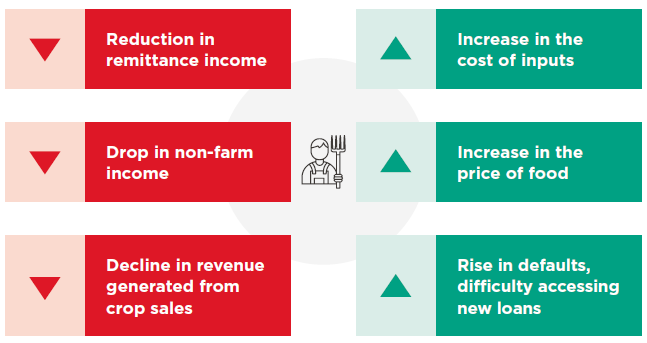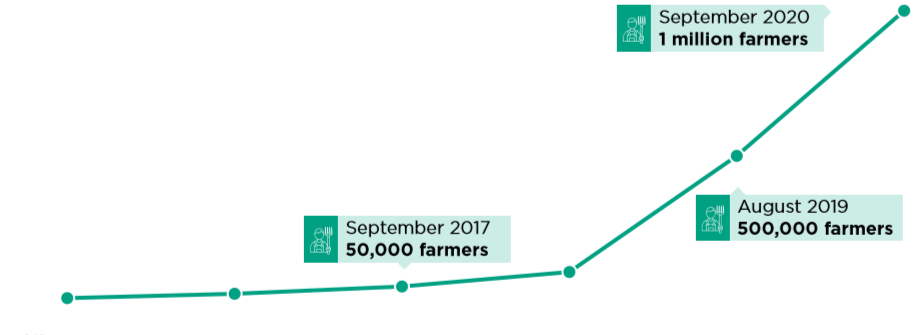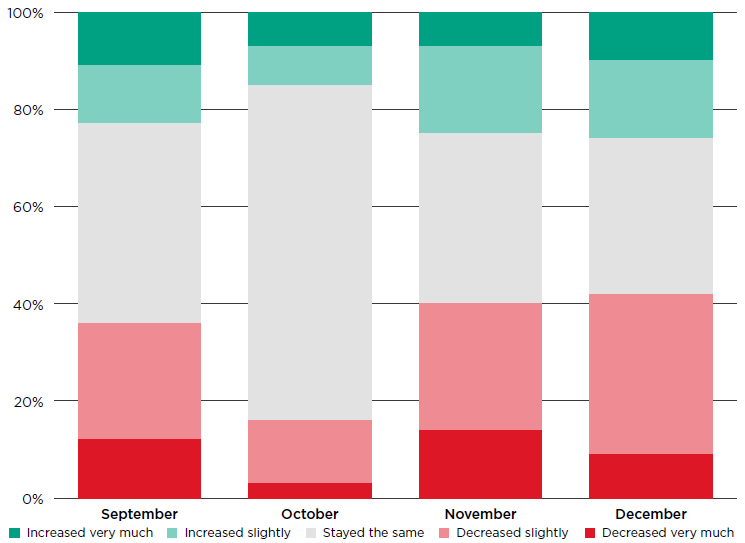From the onset of the pandemic in March 2020 to February 2021, the GSMA AgriTech programme spoke to 40+ organisations, from farmer organisations to agritech companies, agribusinesses and mobile operators to understand how digital agriculture is helping farmers with their adaptation strategies in response to COVID-19.
The results of this research are presented in our report Covid-19: Accelerating the use of digital agriculture. The study offers insights to supply-side actors – the providers of digital agriculture services – to the new challenges facing the demand side actors – smallholders and agribusinesses. It provides examples of services that have been deployed or adapted in response to the pandemic, as well as recommendations for future interventions to investors and donors.
The impact of COVID-19 on smallholder farmers
COVID-19 has exposed the vulnerabilities of agricultural and food systems in low- and middle-income countries (LMICs). Declining incomes and disruptions to the food supply are exacerbating extreme poverty and are challenging food security, forcing farmers to make tough choices.
Up to 70 to 80 per cent of smallholders have reported in various surveys that they are worse off now than prior to the pandemic. According to the World Bank’s COVID-19 Household Monitoring Dashboard, in Ghana as of April 2021, 76 per cent of households with farm income saw their income decline in the last 12 months. In the Philippines, that ratio climbed to 80 per cent.
Farmer incomes are coming under greater strain just as the costs of inputs, food and other expenses are rising. This is translating into higher financial default rates as farmers find it increasingly difficult to sell enough crop to repay their loans.
Figure 1: Trends impacting smallholder farmer incomes and expenses during the COVID-19 pandemic
Source: GSMA
The data reviewed by the GSMA AgriTech programme, such as TechnoServe’s survey on the effects of COVID-19 on East Africa coffee farmers, shows that many smallholder families are shifting their consumption habits and in some cases are reducing the number of daily meals.
Figure 2: Share of farmers interviewed using coping strategies in response to the pandemic, and leading food-based coping strategies, by country
Source: TechnoServe
The role of digital agriculture during the pandemic
Some of the challenges faced by smallholder farmers have become more urgent. In the wake of the pandemic, when asked what they needed, most farmers overwhelmingly cited agronomic advice, inputs, cash to purchase inputs and to cover farm and non-farm expenses, help in overcoming transportation and logistics challenges, and help in identifying markets for their crops.
Digital advisory, agri DFS (particularly mobile money and credit) and agri e-commerce platforms offering more direct market linkages to markets, have proved to be valuable solutions to address these challenges. All these digital agriculture services recorded a major uptick in use in 2020.
In India, the growth of digital advisory service Ama Krushi, which provides farmers with agronomic advice through an IVR hotline and SMS, testifies this trend. After the government implemented the first COVID-19 lockdown in March 2020, Ama Krushi’s service provider PxD ran a survey of smallholders to identify specific information gaps.
With in‑person extension services suspended, PxD adjusted its advisory accordingly, adding COVID-19 information to the service (e.g. which markets remained open during lockdown). Ama Krushi was able to add 40,000 to 50,000 customers per month through much of 2020 to reach the one million customer mark in September 2020.
Figure 3: PxD India digital advisory user growth, 2016–2020
Source: PxD
Greater adoption, but a widening digital gap
Digital agriculture services are helping food systems become more resilient to an unforeseen systemic shock. However, while we have seen greater use and adoption of digital agriculture, there are also signals of a widening gap between those who can access digital services and those who can’t.
Data from the Agriculture Dashboard of impact measurement company 60_decibels show that in Kenya many farmers have increased their digital usage, but at At the same time many others have decreased such usage, as they have been under increasing financial pressure.
Figure 4: Change in digital usage by Kenyan smallholder farmers since the start of the pandemic, September to December 2020
Source: 60_decibels Agriculture Dashboard
Among those who are suffering the most are women, who have been disproportionately affected by government measures to combat COVID-19 like school closures and stay-at-home measures. For many women involved in agriculture, lower phone ownership and internet use means that they are not able to benefit as much as men from the shift, for example, to digital extension services.
There is a risk of a widening gap in digital usage between female and male farmers, if steps are not taken to address the problem. Our report therefore points at the need for impact investors, donors and multilateral organisations to support initiatives that have specific strategies to address the challenges faced by women.
To find out more about the adoption of digital agriculture during the pandemic, please join our webinar on Thursday 17 June where we will discuss key findings from the report with a panel of practitioners. Register here.
THIS INITIATIVE IS CURRENTLY FUNDED BY THE UK FOREIGN, COMMONWEALTH & DEVELOPMENT OFFICE (FCDO), AND SUPPORTED BY THE GSMA AND ITS MEMBERS.







